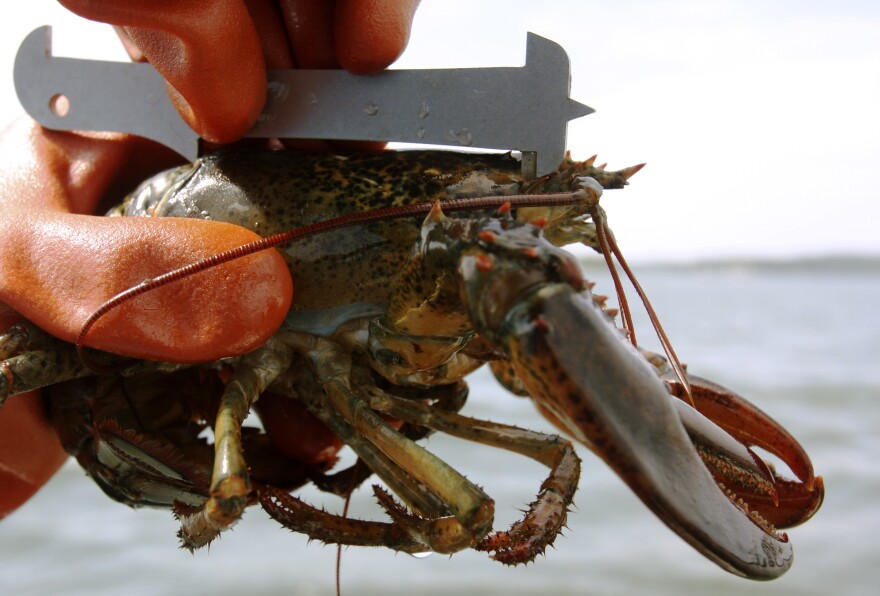An Atlantic States Marine Fisheries Commission board has approved new measures that could change the minimum and maximum catch sizes for lobster in certain parts of Maine.
The fisheries commission said it will gradually implement changes to measurement sizes by fractions of an inch in certain parts of the Gulf of Maine — but only if it observes a 35% decline in the young lobster population through trawl and trap survey data.
Recent assessments have shown a 23% decline in juvenile lobsters, said Pat Keliher, commissioner of the Maine Department of Marine Resources.
"The sky is not falling here," he said. "We're still in a very high abundance mode when it comes to lobsters."
Still, the new measures, if they're implemented at all, are designed to prevent a collapse of the lobster stock, which fishermen in southern New England have already experienced.
"The industry is under a lot of pressure, from whales, from offshore wind," Keliher said. "Having another conversation about something else that could impact them down the road was not something that was looked at very positively. But I think overall they understood the need. Even people who were saying 'status quo' also were saying in the same breath, 'We can't let the stock collapse.'"
The new management measures are intended to allow sublegal lobsters to reproduce before being harvested, Keliher added.
The earliest that fishermen could likely see changes is 2025, but only if the 35% trigger threshold is met.
Keliher said discussions are also underway to form a group of US and Canadian officials, with the goal of creating a more level playing field for lobstermen who fish near each other at the international border but are subject to different regulations.




